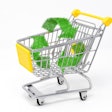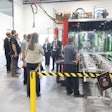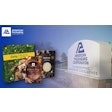
Product packaging has been a cornerstone of the sustainability conversation pretty much from the start. Providing consumers with a physical result of sustainability efforts, as well as including them in the conversation (reduce–reuse–recycle!) would seem to be a straightforward way to ensure everyone is on the same page. However, food packaging comes with unique concerns (food safety, shelf stability, freshness, etc.) and the answers to those concerns can often result in packaging that is complicated to deal with.
Consumer confusion around packaging sustainability claims
“While sustainability is becoming more popular, consumers can be confused by claims on packaging regarding formulation and recycling,” said Haley Randolph, operations manager for Ubuntoo, a global collaboration platform that connects innovators and professionals to accelerate sustainable economic growth. “The increase in lawsuits against companies claiming that their packaging is recyclable shows that consumers are paying attention and don't want to be misled by dubious claims. Consumers want packaging that isn't just technically recyclable, but feasibly recyclable.”
In the U.S., recyclability claims are “increasingly high stakes,” according to the Sustainable Packaging Coalition (SPC), which addressed “Lessons from the past year we’re carrying forward into 2022” in December 2021.
“This past year saw a number of high-profile lawsuits against brands’ takeback recyclability claims, as well as California legislation (SB-343) that aims to limit the use of mobius loops or recyclable claims to only those materials that are recyclable in California,” said Olga Kachook, senior manager for the SPC. “Clearly, the days of vague, unsubstantiated claims of a product’s recyclability are over. Not only do they contribute to consumer confusion and contamination, [2021] has proven that vague claims are increasingly a legal liability.”
Limitations and advances in packaging recyclability
Feasible recyclability is a challenge the pet food industry has been trying to tackle, but technological limitations and accessibility issues remain.
“There have been many advances regarding lightweight flexible packaging, however the challenge of recycling remains,” said Randolph. “Flexible packaging is not widely collected for curbside recycling, so while flexibles uses significantly less plastic than rigid packaging, the recyclability issue remains. There is also a lot of innovation in the area of paper packaging to eliminate plastic coatings. From paper bottles to recyclable, flexible paper packaging, innovations in this space are making it more feasible to replace plastic for many applications.”
Of course a discussion about sustainable packaging can’t really be had without addressing the machinery used to make said packaging. From the flexibility of machines to work with different types of packaging to the sustainability of the machines themselves, it’s another facet of the conversation to take into consideration.
“Key to addressing this is to have machinery that is both flexible and adaptable for current and future needs,” said James Large, sales manager for international developer and manufacturer of packaging machines The Packaging Group. “This requires a careful analysis of the market trends to try and keep in touch with the many developments in material technology. An additional facet is the local demands from a customer relating to a specific market needs. This can be especially demanding in regions of higher ambient temperatures and lower recycling rates. Machinery should be, as far as possible, flexible to run with a wide variety of substrates, but without compromise in performance over more traditional materials. Another key consideration comes from the machine itself and its consumption of energy and spare parts. Focusing on these two elements alone can make a significant impact on reduction strategies.”
The future of sustainability in packaging
The idea (and execution) of sustainability is only going to become more complex, according to industry experts.
“Sustainability is here to stay,” said Large. “It has to be. We all have a moral responsibility to the following generations to make it part of everyday life. As a manufacturer we have researched and developed adaptations to our machines to allow sustainable packaging to run without loss of throughput. We are always seeking ways to make our machinery less energy hungry and looking to reduce the amount of waste produced, for instance during changeover. Mono-materials will become the norm and I could imagine a return to paper-based packaging for certain market segments too.”
A certain amount of experimentation may be necessary for each company and brand to find what works for them at all stages of their sustainability journey.
“To truly achieve sustainability in packaging, companies will have to experiment with new business models and increase their participation in the end-of-life management of their packaging,” said Randolph. “Many companies want to increase their use of recycled content, but progress in obtaining high-quality post-consumer content will require companies to play a role in the recycling system, whether that be through collection programs, EPR (Extended Producer Responsibility) or investments in new recycling technologies. Some of the most sustainable companies are experimenting with refillable and reusable packaging, product concentration and new modes of delivery to customers.”
For the companion article, "Succeeding at sustainability: Go big or get left behind,” published in the February 2022 issue of Petfood Industry magazine, see www.PetfoodIndustry.com/articles/10944.












